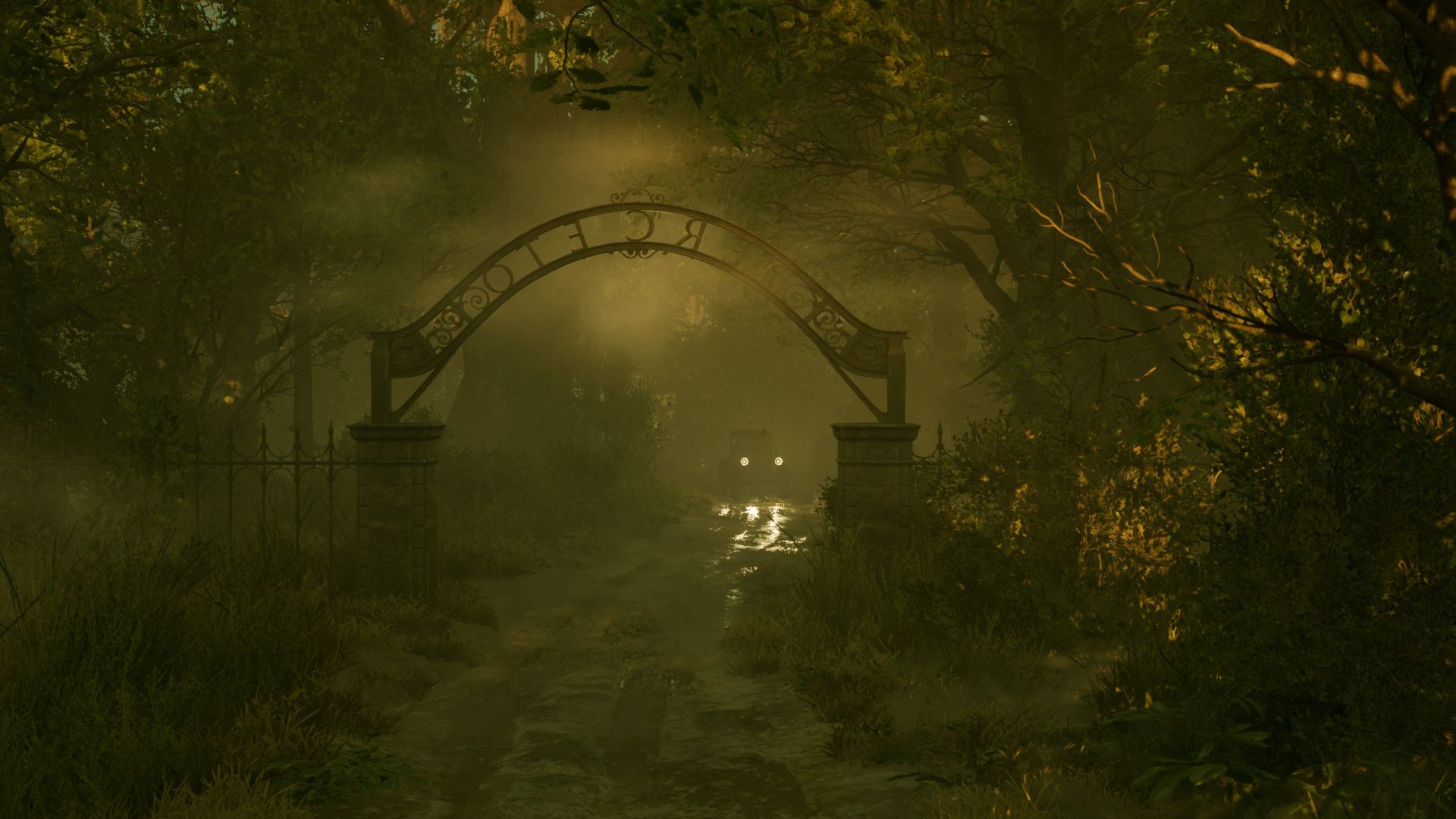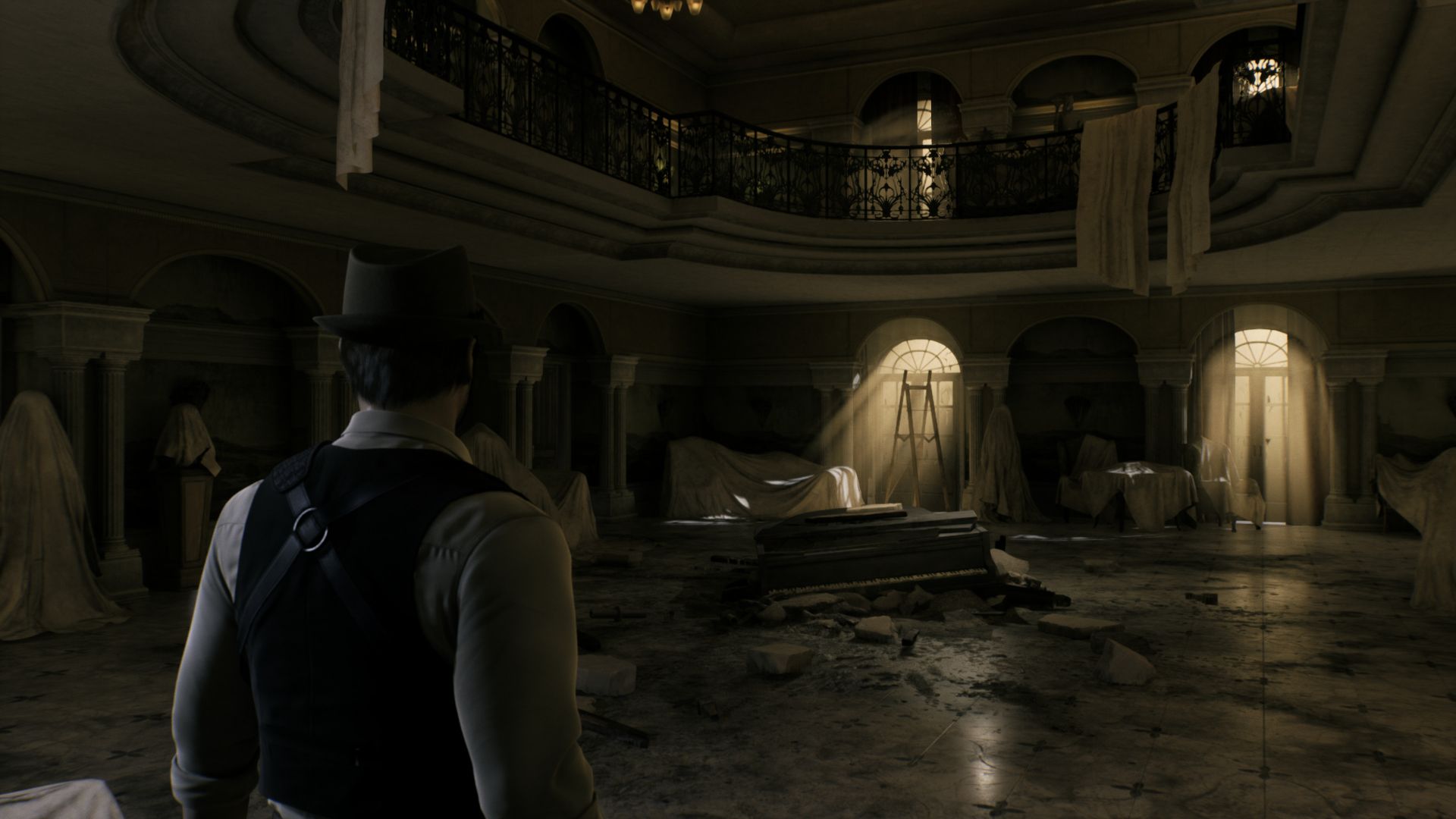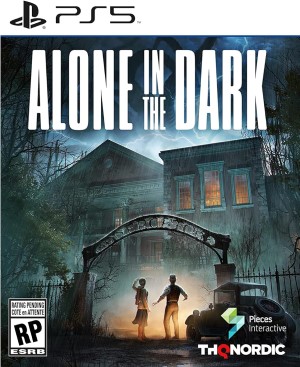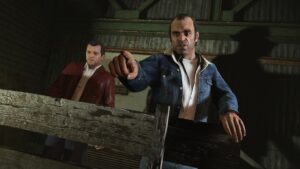
In this new golden age of survival horror games, it’s not a surprise that we’re seeing another attempted revival of Alone in the Dark, the series that practically the entire genre itself owes its existence to. Of course, this isn’t the first time we’re seeing such an attempted revival. It’s been multiple decades since the last time we got a legitimately good Alone in the Dark game, and from 2008’s reboot to the 2015 abomination that was Alone in the Dark: Illumination, things have only gone from bad to worse.
And now we have Pieces Interactive and THQ Nordic’s new reboot, an expanded reimagining of the very first game in the series that homes in on the core tenets of survival horror (well, most of them, anyway), with the aim to deliver a game built around exploration, puzzles, combat, and atmosphere in a market that is hungry for such games, as the success of Resident Evil in recent years has proven beyond doubt. And while the new Alone in the Dark isn’t quite the spectacular success that some of its contemporary peers have become, even with its fair share of rough edges, it’s at least worth a look for survival horror fans.
"While the new Alone in the Dark isn’t quite the spectacular success that some of its contemporary peers have become, even with its fair share of rough edges, it’s worth a look for survival horror fans."
Several key elements from the original 1992 game return in this reboot, though quite a bit has been changed as well, from major new characters to alterations to the lore and backstory to even the core premise. The game begins with co-protagonists Edward Carnby, a private investigator, and Emily Hartwood, who has hired him, driving down to Derceto Manor. An old structure with a long and complicated history, it now functions as an asylum for the insane, with Emily’s uncle, Jeremy Hartwood, being one of several patients. Now, Emily is here to check up on her uncle with Edward as her backup after having received a concerning letter from him- though quickly upon their arrival, they learn that Jeremy has gone missing, and that things within Derceto are not at all what they seem.
There are things about Alone in the Dark’s setup, narrative, and storytelling that work quite well, even if there are also a few that don’t. The brightest highlight in the former group is Derceto Manor itself, which serves as an excellent setting. Particularly from a narrative standpoint, learning the gruesome history of the manor and all the changes it has gone through over the years is one of the stronger parts of the experience. The things that you learn about Derceto’s past are roped into the central narrative and its mysteries in some intriguing ways, lending it quite a bit of added weight.
Another highlight is the eclectic cast of characters you’ll encounter in the manor. There’s a handful of patients and staff to meet in Derceto, each coming with distinct quirks and personalities, and many with their own role to play in the story. I don’t want to oversell things here- that cast of characters definitely feels like a peripheral addition to the main story more often than not, but when they do show up, they usually end up making an impression for some reason or the other.
Unfortunately, the protagonists themselves aren’t quite as strong. Carnby and Emily do, of course, have their own stories and histories, and their own stakes in the larger plot, but both of them are let down by inconsistent writing and surprisingly disappointing performances. With Carnby played by David Harbour and Emily by Jodie Comer, I was expecting the leading duo to be among the game’s biggest strengths, but there were way too many moments throughout my time with the game where their tone or inflection wouldn’t feel right for the situation they were in, or they would be speaking weirdly faster or slower than they should, almost as if the audio had been manipulated to fit pre-animated cutscenes. Both characters also have some clunkily written dialogue, as a result of which their reactions to major revelations or surreal, outlandish sequences often entirely fail to reflect the gravity of what they just witnessed or experienced.
"Derceto Manor serves as an excellent setting. Particularly from a narrative standpoint, learning the gruesome history of the manor and all the changes it has gone through over the years is one of the stronger parts of the experience."
Narratively, then, Alone in the Dark is certainly something of an inconsistent experience- but one area where it impressed me almost without any caveats is the exploration, most of which is done within Derceto. The manor is a sizeable, multi-storied structure that, in true survival horror fashion, is also built like a maze. Throughout the game, you slowly but surely unlock and master the environment, and with plenty of backtracking, unlocking shortcuts, checking your map to see where you should be headed next, and the like, Alone in the Dark hits all the notes you would expect a survival horror game to where exploration is concerned, and hits them quite well.
Aiding the looping, interconnected level design further is the fact that exploration generally feels pretty rewarding. You’re going to be finding ammo and health pickups, key items to solve puzzles, notes to flesh out the backstory and main narrative, and more. Also scattered throughout the game are dozens of collectibles called Lagniappes, objects of all shapes and sizes that come in sets of three. Complete a set, and you’ll unlock all manner of bonuses, ranging from new lore tidbits to in-game items and weapons and more. I always felt motivated to go off the beaten path and explore, and that was thanks in large part to how rewarding finding new Lagniappes and completing sets always feels.
Of course, the puzzles are a big part of Alone in the Dark too (even by survival horror standards), and sure enough, there’s a bevy of them to be found and solved across the entirely of the experience. Anyone who’s familiar with the genre and its usual trappings is going to be in very comfortable territory here, which is to say that though Alone in the Dark’s puzzles aren’t extraordinary or unusual by any means, they are quite consistently solidly designed and engaging. None of them are really head-scratchers, but the majority of them feel quite rewarding. Especially when you’re juggling multiple ongoing puzzles at once and trying to figure out which item you need to take to which room to solve which puzzle, they contribute to the exploration and backtracking significantly. Meanwhile, genre veterans can also choose an “old-school” setting that eliminates a lot of the guidance the game otherwise provides, while other elements such as text highlighting, dynamic objectives, and map guidance can also be toggled on or off individually, for those who want to play this game like a classic, old-school horror game.
"Throughout the game, you slowly but surely unlock and master the environment, and with plenty of backtracking, unlocking shortcuts, checking your map to see where you should be headed next, and the like, Alone in the Dark hits all the notes you would expect a survival horror game to where exploration is concerned, and hits them quite well."
As strong as the puzzles and exploration are, the third major pillar of Alone in the Dark’s gameplay experience – the combat – is considerably weaker. Movement in general feels pretty janky (especially the glacial slow default walk), and during combat, those issues become that much more exacerbated by the need to stay nimble on your feet. It doesn’t help that aiming feels a bit wonky at times as well, and with weapons lacking satisfying feedback, hits not feeling particularly hefty, and enemy animations often being quite jerky, combat ends up feeling like one of the game’s most unpolished aspects. The general lack of any real progression mechanics also hurts the experience, because other than new enemies and weapons, combat remains largely static throughout the game. And thanks to all of the aforementioned issues, the new enemies and weapons don’t spark too much excitement either.
Alone in the Dark also makes the very curious decision to almost entirely separate its sections that are focused from puzzles and exploration from the ones that are focused on combat. Your time in the game will be pretty evenly split between Derceto and a number of otherworldly locations that you’ll be transported to from time to time. When in the manor, though there are some brief, scripted sequences where the environments suddenly change and distort, largely, there’s no combat whatsoever, which means there is almost no sense of real danger or tension to keep you on the edge of your toes.
Sure, the manor is an atmospheric place, but there’s only so far the atmosphere can take you when you know for a fact that you’re not going to be in any actual danger while you’re still in Derceto. Even in other locations, in fact, “danger” is a strong word to use, because this is a pretty easy game, even on the default difficulty. Enemies go down pretty easily, their hits don’t usually do too much damage, ammo and health are found in abundance, and there isn’t even any inventory management to take care of, which means there’s no real challenge or bite to the majority of the experience. As such, whether you’re in combat or out of it, even though Alone in the Dark does feel suitably atmospheric, very rarely does it manage to elicit genuine scares.
"As strong as the puzzles and exploration are, the third major pillar of Alone in the Dark’s gameplay experience – the combat – is considerably weaker."
On the technical front, it’s also an inconsistent experience. Visually, Alone in the Dark looks good enough. No, you’re not going to find the ultra-high production values and the obsessive level of fidelity and attention to detail of something like Resident Evil or Dead Space here, but the game can look impressive in its own right every so often- even if it does have a few rough edges, from lip syncing issues to the occasional visual bug during both cutscenes and gameplay. Those rough edges are much more prominent on the audio side of things, however, with issues such as poor mixing or borked effects when you’re in confined spaces (among others) being quite noticeable.
Alone in the Dark isn’t the home run that many would have hoped the franchise would finally get at a time when the survival horror genre is doing better than it ever has. From rough combat and a lack of actual scares to storytelling issues and more, the game has several flaws that aren’t insignificant in the slightest even when viewed on their own, and put together, they only serve to hurt the experience that much more. At the same time, however, this isn’t a game without its redeeming qualities. Whether it’s Derceto Manor’s level design, the exploration, or the puzzles, Alone in the Dark succeeds in a lot of ways that will please fans of the genre. Though those strengths aren’t quite strong enough to make up for the game’s deficiencies in other areas, they do still make for a game that survival horror aficionados will likely get a fair bit of enjoyment out of.
This game was reviewed on the PlayStation 5.
An atmospheric setting that also serves as one of the story's stronger points; An interesting cast of secondary characters; Solid, interconnected level design makes for engaging exploration; Well-designed puzzles; Looks decent.
Clunky writing and disappointing performances from the leads make for inconsistent storytelling; Combat is rough and unpolished; No real sense of challenge; The decision to separate combat from exploration and puzzles eliminates a lot of the tension; Some technical rough edges, especially on the audio front.




















